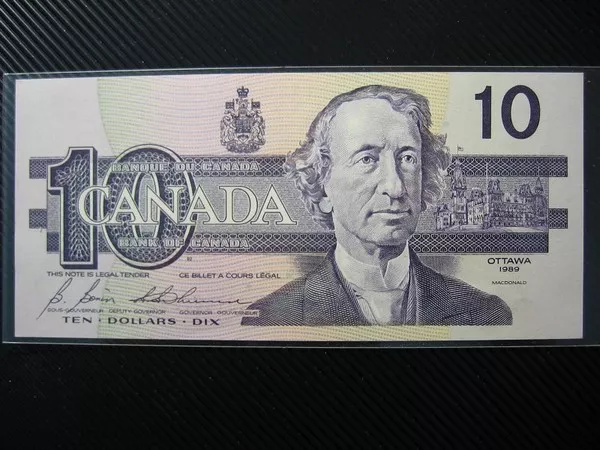The evolution of currency systems is often shaped by a myriad of economic, social, and technological forces. In the case of Canada, the decision to phase out $1 dollar bills in favor of the more durable and cost-effective $1 coins, known colloquially as the “loonie,” marked a significant transition in the country’s monetary landscape. This article aims to delve into the multifaceted reasons behind Canada’s shift away from $1 dollar bills, exploring the economic rationale, societal implications, and technological advancements that drove this transformation.
Historical Context
The history of Canada’s $1 dollar bill dates back to the mid-20th century when the Bank of Canada first introduced it as a legal tender. Initially, the paper bill served as a convenient medium of exchange, facilitating transactions across the vast expanse of the country. However, as Canada’s economy grew and evolved, so too did the need for a more efficient and cost-effective form of currency.
Economic Considerations
One of the primary drivers behind Canada’s decision to phase out $1 dollar bills was rooted in economic considerations. The rising costs associated with producing and maintaining paper currency, coupled with the shorter lifespan of bills compared to coins, prompted policymakers to explore alternative options. By transitioning to $1 coins, which have a significantly longer circulation life, Canada aimed to reduce the overall cost burden associated with currency production and replacement.
Moreover, the durability of coins offered distinct advantages over paper bills in terms of longevity and resilience to wear and tear. This meant that $1 coins could remain in circulation for decades, thereby minimizing the need for frequent replacements and reducing the environmental impact of currency production.
Social Acceptance and Cultural Significance
Beyond the economic rationale, the decision to adopt $1 coins also reflected broader social and cultural dynamics within Canadian society. The introduction of the iconic “loonie” in 1987 not only symbolized a shift in currency but also sparked a sense of national pride and identity. The image of the loon, a quintessential Canadian bird, emblazoned on the coin, served as a powerful symbol of the country’s natural beauty and wilderness heritage.
Moreover, the widespread acceptance of $1 coins among the Canadian populace underscored the adaptability and resilience of the country’s citizens in embracing change. Over time, the loonie became deeply ingrained in Canadian culture, featuring prominently in everyday transactions and serving as a tangible reminder of Canada’s distinctiveness on the global stage.
Technological Advancements
The advent of new technologies also played a pivotal role in Canada’s transition away from $1 dollar bills. As digital payment systems and electronic transactions became increasingly prevalent, the demand for physical currency began to decline. Consumers embraced the convenience and security offered by electronic payment methods, leading to a gradual shift away from cash-based transactions.
Furthermore, advancements in coin production technologies, such as improved minting processes and materials, contributed to the feasibility and efficiency of producing $1 coins on a large scale. These technological innovations not only enhanced the quality and durability of the coins but also reduced production costs, making them a more attractive alternative to paper bills.
Public Policy and Stakeholder Engagement
The decision to discontinue $1 dollar bills required careful consideration and consultation with various stakeholders, including financial institutions, retailers, and the general public. Government agencies and policymakers engaged in extensive outreach and communication efforts to garner support for the currency reform initiative.
Public education campaigns were launched to raise awareness about the benefits of $1 coins and address any concerns or misconceptions among the population. Additionally, collaboration with industry partners ensured a smooth transition process, with measures implemented to facilitate the withdrawal of $1 bills from circulation and promote the adoption of $1 coins.
Environmental Sustainability
From an environmental perspective, the transition to $1 coins aligned with Canada’s commitment to sustainability and resource conservation. Unlike paper bills, which are often made from a combination of cotton and linen fibers, coins are typically composed of metals such as nickel, copper, and zinc. By promoting the use of coins over bills, Canada sought to reduce its reliance on finite natural resources and minimize the environmental footprint associated with currency production and disposal.
Moreover, the longer lifespan of $1 coins meant that fewer resources would be expended on manufacturing new currency, further contributing to environmental conservation efforts. This emphasis on sustainability resonated with Canadians’ growing awareness of environmental issues and underscored the government’s commitment to responsible stewardship of natural resources.
See Also: CAD Banknotes: Evolution, Denominations & Security Features” href=”https://www.fxcurrencyconverter.com/archives/42390″>CAD Banknotes: Evolution, Denominations & Security Features
Conclusion
In conclusion, Canada’s decision to phase out $1 dollar bills in favor of $1 coins represented a significant milestone in the country’s monetary history. Driven by economic considerations, societal acceptance, technological advancements, and environmental sustainability, the transition underscored Canada’s ability to adapt to changing economic and cultural landscapes.
By embracing the iconic “loonie” as a symbol of national pride and identity, Canadians demonstrated their willingness to embrace innovation and usher in a new era of currency. While the shift away from $1 dollar bills may have initially posed challenges, the long-term benefits in terms of cost savings, durability, and environmental sustainability have reaffirmed the wisdom of Canada’s decision. As the country continues to evolve in the digital age, the legacy of the loonie serves as a reminder of Canada’s resilience, ingenuity, and commitment to progress.


